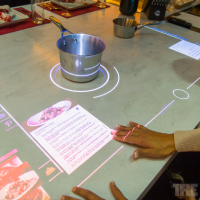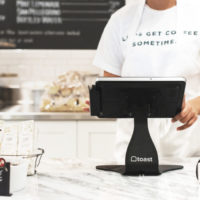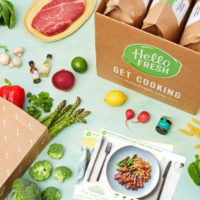Meal-kit subscriptions are the talk of VC town. Since April investors have poured $115 million into the 3 front runners – Blue Apron, Plated and Hello Fresh – alone. Yes, the space is getting frothy.
But before any of these companies were around, artisan food marketplace Foodzie helped to pioneer the subscription box model with its Tasting Boxes, which delivered sample-sized products from local food artisans. In 2012, Foodzie was acquired by Joyus, and now the founders Emily and Rob LaFave are back with a new venture. Along with CTO and cofounder Josh Fraser, they are putting their own spin on the meal-kit model with Forage, a meal-kit subscription box filled with ingredients and recipes from hot local restaurants. The startup launched out of private beta last month to much fanfare.
“[With Foodzie] we learned that to truly have an impact on the way people eat, we needed to go beyond specialty food products and tackle the larger grocery category with perishable food like fresh produce and meat,” says Emily LaFave.
HOW IT WORKS: MEAL-KIT MEETS RESTAURANT
The San Francisco-based startup helps you cook like a restaurant chef in your home. It delivers recipes for dishes from local hotspot restaurants, like Dosa and Hapa Ramen, along with all of the ingredients (locally sourced when possible) you need make them. Each week the boxes feature recipes for a specific food theme, like Greek or South Indian, and are designed to be cooked in 20 minutes or less. Labor and time intensive ingredients of a meal, like ramen broth, which takes hours to prepare, are prepped by Forage’s culinary operations team and added to the meal-kit.
It also tries to limit food and packaging waste by using dry ice and reusable totes for delivery; 90 percent of its packaging is reusable, recyclable or compostable.
The startup uses its own courier service to deliver boxes in San Francisco, and it has partnered with OnTrac to deliver outside of the city.
BUSINESS MODEL
Forage has been able to enlist restaurants by providing financial incentives for them to share their recipes. Emily wouldn’t disclose the details of those arrangements, though. “Restaurants and chefs see a macro trend of people wanting to cook. Being a part of that experience builds loyalty and gives them more exposure. It’s a way to scale themselves in a way that’s true to their values and the quality of their food,” says LaFave.
Meal subscriptions are $60 a week, which gives customers four credits, or four meals for $15 each. You can also roll credits over or use them all at once for a dinner party, for example.
While Forage is more expensive than its meal-kit competitors, Emily thinks its focus on restaurant quality dishes and speediness of meal prep sets it apart. And investors seem to agree that there’s room for Forage in the crowded space. Ev Williams of Twitter and Whole Foods Board Member Hass Hassan have invested an undisclosed amount into the company, TechCrunch reports.
WORDS OF WISDOM FOR ENTREPRENEURS
Having built and sold one successful food startup and received funding for her newest concept, Emily shares some words of wisdom for fellow food tech startups seeking funding.
“Identify the milestones you’re trying to hit and raise the right amount to accomplish them. For us that meant raising just enough to stay focused on getting to product market fit,” she says.
Her team kept tweaking Forage until they had customers that loved the experience, had strong retention and were evangelizing the brand. “There’s a risk with raising too much during this phase, especially with institutional investors, where they push you to focus on growth too early, before you’ve actually nailed the core product offering.”
CHANGING THE WORLD THROUGH COOKING
For Forage this is about more than just capitalizing on a trend. “We’re on a mission to make it easier for people to cook more often,”Emily tells me. “And through cooking, we aim to build a better food system with less processed food and less food waste. We want to see more people connecting around the dinner table, enjoying a meal they proudly cooked themselves.” This is definitely a world we want to live in.






